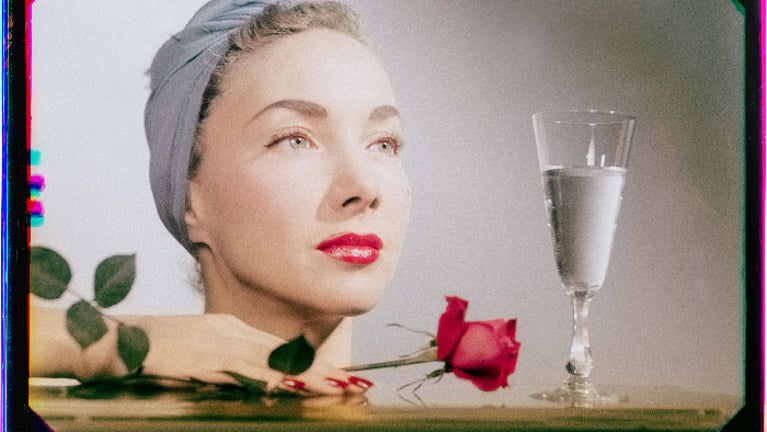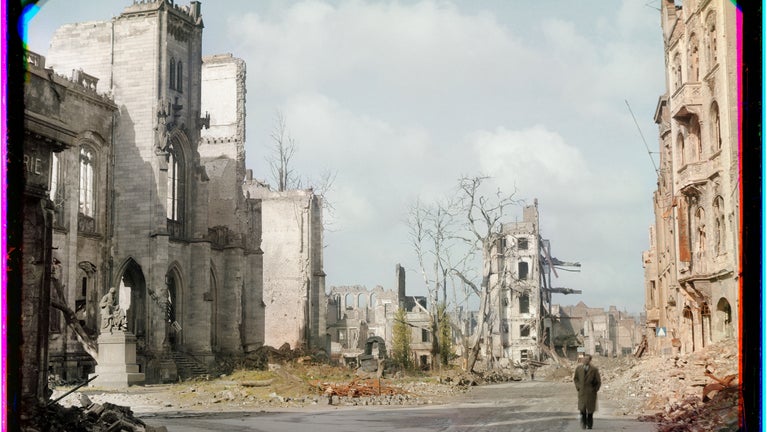
Unseen Colour: a photography exhibition by Werner Bischof
- Published:
- 27 June 2024

The first in Lacock's collaboration with Magnum Photos, discover previously unseen photographs created by early colour adopter and photojournalist Werner Bischof.
Unseen Colour by Werner Bischof
Largely considered one of the most important photographers of the 20th century; Werner Bischof’s iconic images explored what it is to be human. Famed for his black and white photojournalism of the post-war world, Bischof used the Devin Tri-Color camera from 1939 onwards for fashion, still life and documentary work. In 2016, decades after Werner’s death (he died in 1954 aged 38), his son Marco discovered the glass negatives taken by the camera carefully stored in triplicate. One identical image was captured three times through different colour filters: red, green and blue. The resulting photos have an incredible resolution and unmistakable colour intensity.
After several years of research and experimentation with friends and experts, we came up with these pictures, captivating in their colourfulness and brilliance.

The Werner Bischof Archive
'Werner Bischof wanted to become a painter, contrary to the ideas of his father, a factory director' says Marco Bischof of his father's ambitions. Marco is now director of the Werner Bischof archive and it's thanks to him that these new images have come to light.
'He became a photographer, his love of colour has always accompanied him. In many situations he would first sketch before he began to take photographs. Today we are amazed by these pictures, but anyone who takes a closer look at Bischof's work knows that he used colour from the very beginning.'
During the 1930s and 40s colour photography was experimental, and expensive too. It wasn't widely used, and mostly for commercial and advertisement purposes such as Bischof's work in the swiss Du magazine (1941-1954). Almost thirty years ago Werner's wife Rosellina handed the archive over to Marco, which included the mysterious collection of Devin Tri-Color glass negatives stored in steel cabinets. It took time and specialist skills to recreate the images as faithfully as possible.
'Now we are particularly pleased to show the exhibition at the Fox Talbot Museum in Lacock,' Marco says, 'the place where the first negative was first at home.'
Find out more about the Werner Bischof archive here
The Home of Photography
Photography exhibitions have an important connection to Lacock as it was the home of Victorian photographic pioneers Constance and Henry Fox Talbot, who experimented with early modern photographic techniques in the1800s. Henry successfully created the first ever negative at the abbey in the 1830s and soon after patented his calotype process. You can see the window he captured in the first negative in the Abbey's South Gallery. The Fox Talbot Museum shares the story of his experiments and impact on modern photography, and hosts regularly changing exhibitions celebrating modern and traditional techniques.
Find out more about Henry Fox Talbot here
Magnum Photos
Magnum Photos is a cooperative of acclaimed, independent photographers who share an ongoing commitment to documenting world events, people, places, daily life and culture.
Founded in 1947, Magnum Photos has been telling stories of the past, defining the present, and shaping the future through photography for over 75 years, united by its values of authenticity, excellence, and respect.
With more than 6.6 million followers online and a rolling program of museum shows, exhibitions, and events across the globe, Magnum photographers continue to inspire a growing worldwide audience.
